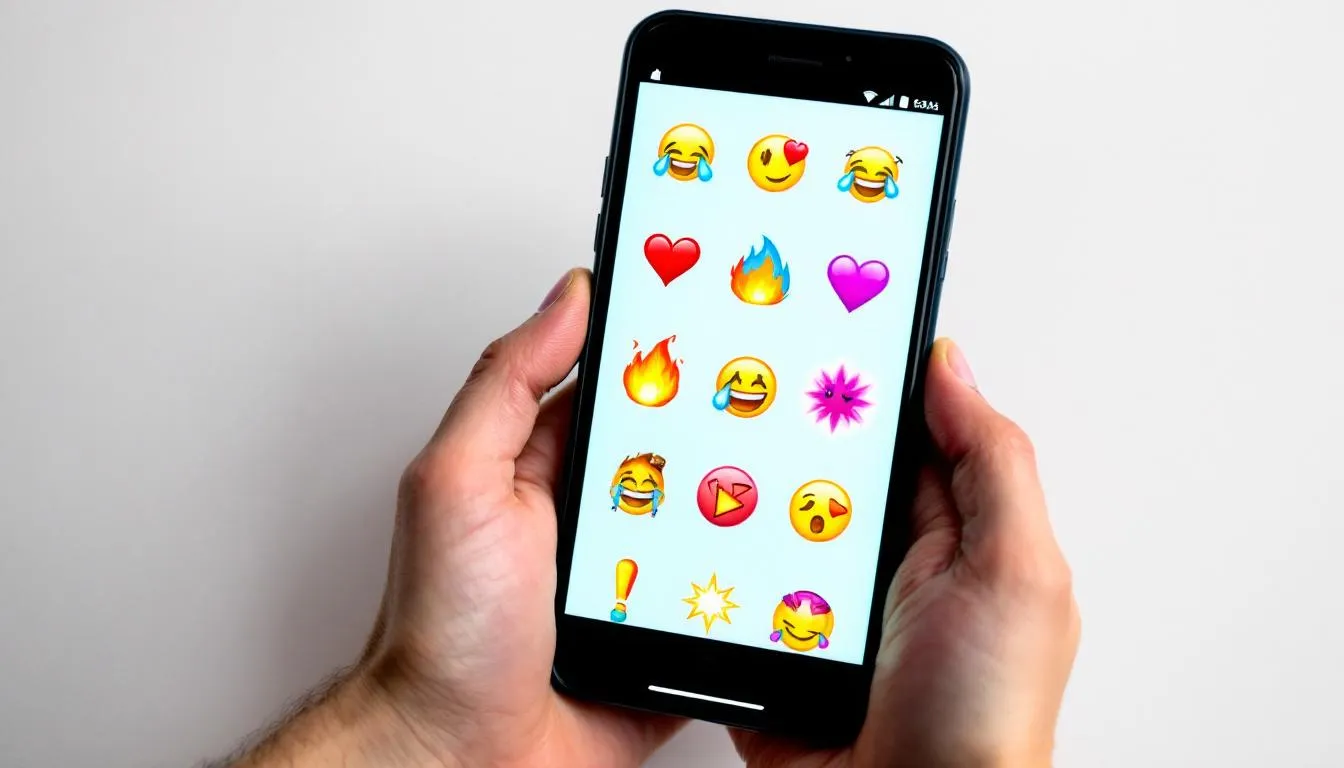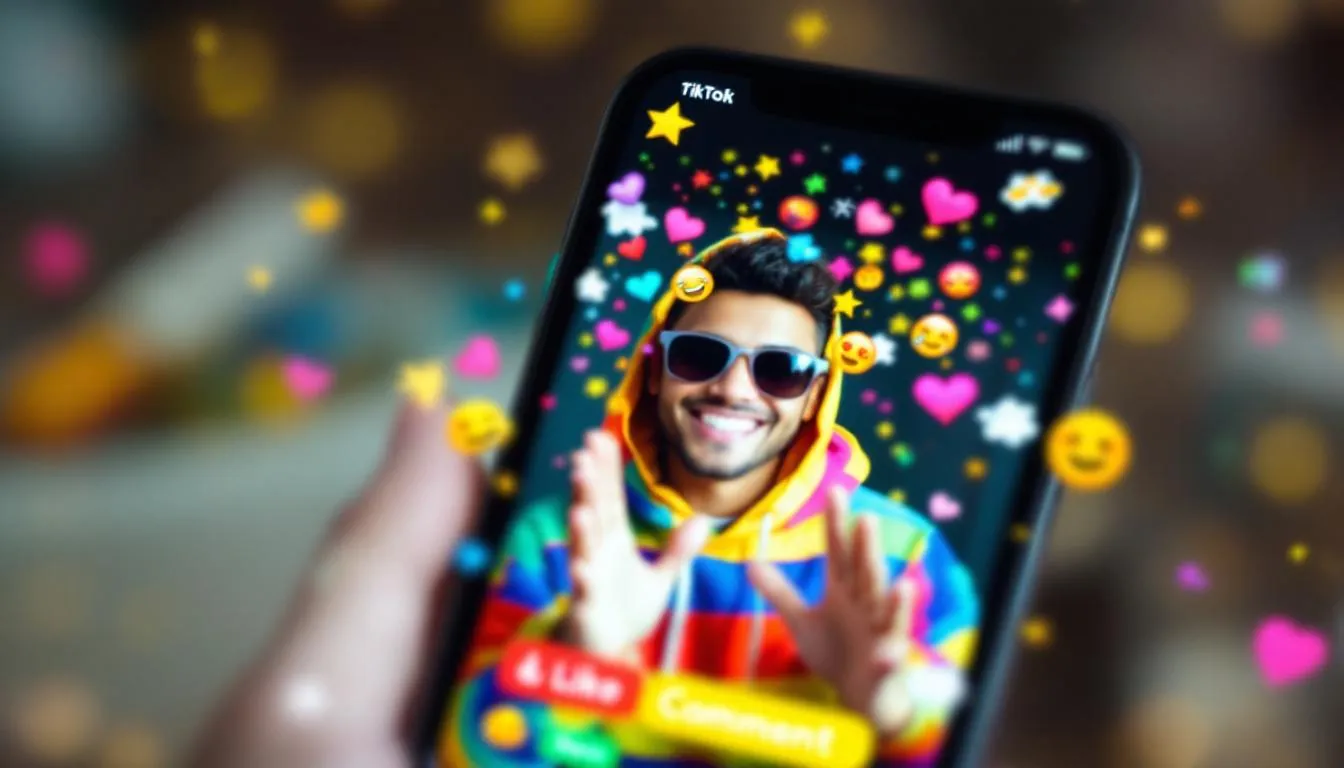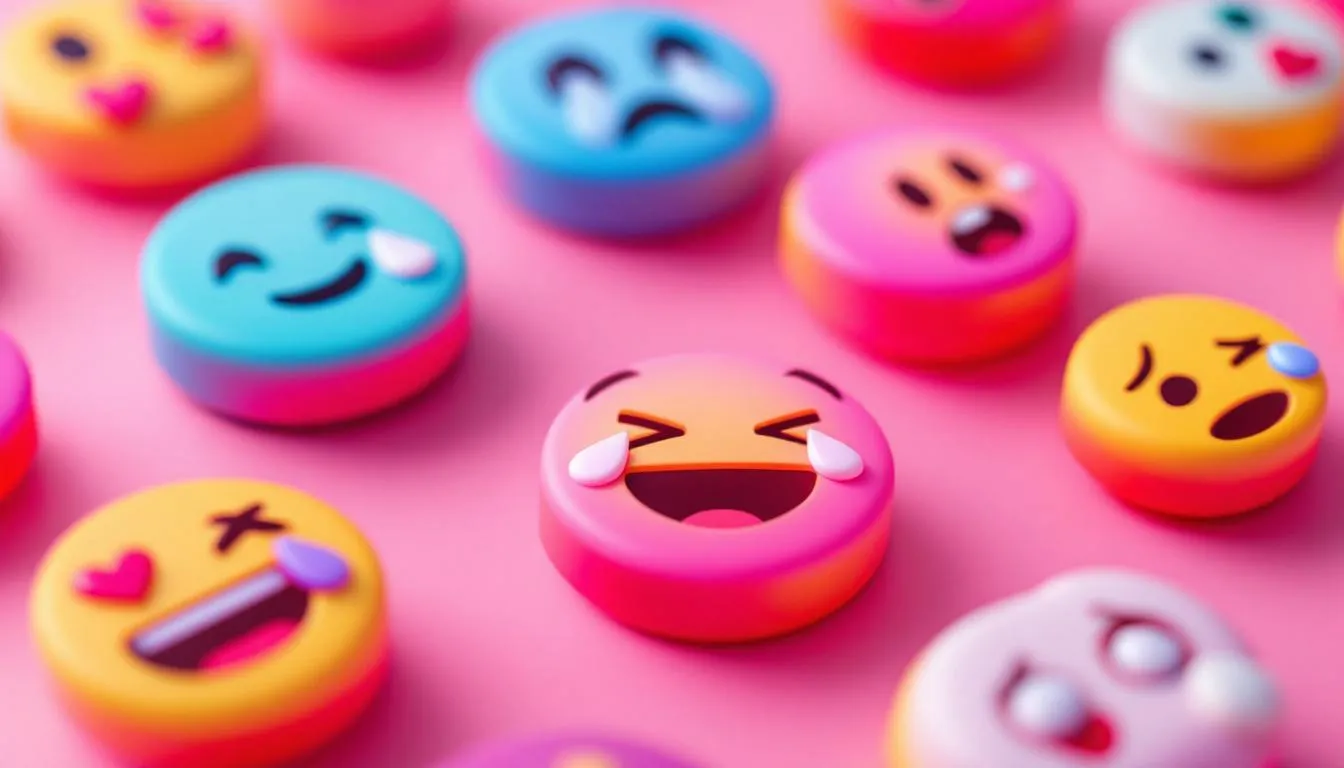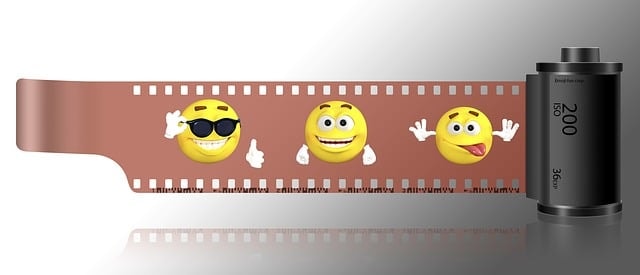If you’re running anything on the TikTok app in 2025 and still see emojis as cute little add-ons, here’s your wake-up call. TikTok emojis aren’t just filler—they’re the secret handshake of Gen Z, the viral accelerant for challenges, and, for marketers, pure engagement gold. And that’s before we even get to the hidden TikTok emojis or TikTok’s secret emoji codes. These aren’t your run-of-the-mill smiley faces from your iPhone keyboard. They’re custom, quirky, and—yes—sometimes totally mysterious.
If you aren’t using TikTok emojis (including the weird and wonderful secret ones), you’re missing out on reactions, reach, and realness. Let’s fix that.
Emoji 101: What are TikTok emojis and how do they work?

Before we decode the secret emoji codes and spill on hidden TikTok emojis, let’s cover basics. TikTok gives you two types of emojis:
- Native emojis: The ones you see everywhere—smiley face, heart, rolling eyes, skull emoji, etc.
- TikTok emojis: Exclusive to the TikTok app. These include a bunch of hidden emojis you can only access with emoji codes (not your keyboard). They’re unlocked with emoji shortcode: you type their special code in square brackets, like [happy] or [angry].
Why do these exist?
TikTok’s secret emoji codes are a language inside the platform. They let you express extreme excitement, heartfelt emotions, or even extreme anger—often with a single, mysterious icon you won’t find elsewhere.
Quick cheat sheet:
- Emoji shortcode: Special text you type in square brackets (e.g., [openmouth])
- Emoji codes: The specific codes (e.g., openmouth, angry, smile)
- Secret emoji codes: The hidden ones, not in your emoji picker
The hidden world: Meet TikTok’s secret emojis
Ready to go underground? The real fun starts with TikTok’s secret emojis—the ones you won’t see on your default keyboard or even in TikTok’s sticker menu.
They only show up when you type the right emoji code in square brackets. Most users have never heard of these. Marketers who do? They stand out.
Why “secret”?
- They’re not native emojis.
- They’re not obvious.
- They’re everywhere in viral comments, but only if you know what to look for.
Example:
Ever wondered why people kept spamming the chair emoji under certain videos? That’s a classic “hidden emoji” meme—using TikTok secret emoji codes to join an inside joke.
Other hidden tiktok emojis include: [angry], [smile], [happy], [cry], [brain], and so on. Each brings its own flavor—think pink face for blushing, blue face for extreme excitement, or a winking face to show you’re feeling mischievous.
Full cheat sheet: All TikTok hidden emoji codes (and how to use them)
Alright, let’s get seriously practical. Here are TikTok’s hidden emoji codes marketers need, how to use them, and why they work.
| Emoji | Code (use with brackets) | Meaning / Use Case |
|---|---|---|
| Happy TikTok Emoji |
[happy]
Classic happiness, extreme happiness, upbeat content
Angry TikTok Emoji
[angry]
Anger, frustration, extreme anger, ranting (great for meme/react)
Smile Emoji / Smiley Face
[smile]
Big smile, small smile, friendly, approachable
Brain Emoji
[brain]
Express “mind blown,” clever ideas, smart content
Skull Emoji
[skull]
“Dead” from laughter, cringe moments, scary video
Rolling Eyes
[rollingeyes]
Sassy, sarcastic, annoyed, playful
Blushing Face
[shy]
Blushing, feeling shy, cute cat, adorable eyes
Sweat Drop / Sweaty Face
[sweat]
Stress, nervousness, sweaty face, cringe moments
Winking Face
[wink]
Feeling naughty, playful, mischievous grin
Open Mouth
[openmouth]
Express shock, surprise, big news
Chair Emoji
[chair]
In-jokes, meme reactions, trendjacking
Snotty Face
[snot]
Crying, express sadness, heartfelt emotions, snotty face
Sad Eyes
[tears]
Tears streaming, express sadness, dramatic effect
Dollar Signs
[money]
Deals, giveaways, dollar signs, express excitement for sales
Tongue Sticking
[tongue]
Cheeky, playful, feeling mischievous
Two Fingers
[twofingers]
Peace, win, “I see you,” fingers pointing
Pink Face
[pinkface]
Embarrassment, peach face, feeling shy, dumpling face
Purple Face
[purpleface]
Shock, anger, extreme excitement
Blue Face
[blueface]
Cold, surprise, feeling sleepy, extreme happiness
Green Face
[greenface]
Disgust, “sick,” cringe moments
Peach Face
[peachface]
Blushing, cuteness, heartfelt emotions
Dumpling Face
[dumplingface]
Super cute, chubby cheeks, adorable moments
Smiling Face
[smilingface]
Friendly, open, welcoming
Big Kiss
[kiss]
Affection, appreciation, big kiss, fan love
Concerned Look
[concerned]
Nervous, worried, concerned look
How to use hidden TikTok emojis?
To drop a secret tiktok emoji, just type the code in square brackets—[smile]—in your comment, caption, or even reply. Hit post. If the code is valid, it instantly transforms into a TikTok-style emoji, not a native emoji.
Why does this matter for marketers?
These hidden TikTok emojis are both rare and instantly recognizable to hardcore users. Using them makes you insider, not outsider. It’s social proof in emoji form—and a shortcut to boosting your brand’s engagement with real fans, not just casual scrollers.

Secret TikTok emoji codes are like a backstage pass. When you use them, you’re not just talking at your audience; you’re speaking their language. Each hidden TikTok emoji can trigger a specific reaction—sometimes laughter, sometimes curiosity, sometimes an instant sense of belonging.
But what does this look like in real campaigns? Let’s break it down with practical examples using the most impactful secret TikTok emojis:
happy tiktok emoji
The [happy] code isn’t just about smiling—it’s your default for extreme excitement, big announcements, or a playful twist. Drop it in launch posts or giveaways to radiate positivity and let your followers know it’s time to celebrate. When a brand pairs the happy tiktok emoji with other TikTok hidden emoji (think [happy][money][openmouth]), it signals something big is happening—inviting users to join the hype and share their own reactions.
How to use:
- Launch teasers (“Something big drops tomorrow! [happy][openmouth]”)
- Celebrate milestones (“We hit 100k! [happy][happy][smile]”)
- React to fan content (“We see you! [happy][wink]”)
brain emoji
Think “mind blown” moments, clever campaigns, or when you want to show your brand is on top of trends. The brain emoji [brain] delivers instant “wow, smart” energy. It’s perfect for campaigns where you reveal a cool hack, surprising stat, or expert-level move. Hardcore TikTok users spot this instantly as a wink at next-level thinking.
How to use:
- Share a tip/trick (“Hack your routine: add ice to your skincare. [brain]”)
- Announce research findings (“90% of users do THIS on TikTok. [brain][openmouth]”)
- Flex creative ideas (“Bet you didn’t think of this! [brain][wink]”)
angry face
The [angry] code and angry face emojis aren’t just for rants. They’re a comedic tool for faux outrage—think “I can’t believe this deal!” or “That hack is wild!” Used right, they create a sense of drama and urgency that sparks comments, duets, and stitches.
How to use:
- Highlight shocking deals or sales (“25% off sitewide?! [angry][money]”)
- React to funny fails (“When your coffee spills…again [angry][tears][sweat]”)
- Play along with viral challenges (“When the sound doesn’t sync: [angry][rollingeyes]”)
rolling eyes
Rolling eyes [rollingeyes] (sometimes called upturned eyes) signals sarcasm, sass, or mock exasperation—ideal for meme marketing and playful call-outs. For brands, it’s a tool to show you’re in on the joke and not taking yourself too seriously.
How to use:
- Respond to obvious questions (“Another ‘is this vegan?’ comment… [rollingeyes][smile]”)
- Poke fun at trends (“When your boss says ‘just go viral’ [rollingeyes][skull]”)
- Light self-deprecation (“Our 7th coffee today… [rollingeyes][sweat]”)
blushing face
Blushing face ([shy], pink face, or peach face) is for showing appreciation, reacting to compliments, or sharing those “aw shucks” brand moments. It creates a feeling of humility and connection, which is gold for community building.
How to use:
- Thank loyal fans (“You guys are the best! [shy][smile][tears]”)
- Highlight fan-made content (“We’re blushing! [shy][pinkface][happy]”)
- React to going viral (“Didn’t expect this love… [shy][smile][openmouth]”)
Bottom line:
Hidden TikTok emojis are more than decoration. They’re a fast track to authenticity, engagement, and viral potential—if you know which ones to use, and when. Marketers who master these codes aren’t just participating in TikTok culture—they’re shaping it.
Decoding emotion: The hidden meanings behind TikTok emojis
TikTok emojis aren’t just decoration. They’re loaded with hidden meanings.

Here’s how marketers can decode the emotion, subculture, or running joke behind the most-used secret emoji codes:
- Angry TikTok emoji ([angry], angry face, furrowed brows, red or purple face): Not always literal anger. Can mean “I’m fake angry for laughs,” “relatable rage,” or “this is wild.”
- Happy TikTok emoji ([happy], big smile, smiling face, yellow face): Classic happiness, often with extreme excitement or playful sarcasm.
- Smile emoji ([smile]): Used for friendliness, reassurance, or as a soft flex (“I’m not mad, just disappointed”).
- Rolling eyes ([rollingeyes], upturned eyes): Used for cringe moments, sarcasm, or when users want to show disbelief.
- Skull emoji ([skull]): Not about scary video. Means “I’m dead” from laughter, used in place of LOL.
- Blushing face, pink face, dumpling face, peach face, small smile: Feeling shy, embarrassment, cute cat energy, adorable eyes.
- Sweaty face, sweat drop ([sweat]): Cringe, stress, nervous energy, sweaty situations.
- Brain emoji ([brain]): Mind-blown, clever ideas, showing off “brainpower.”
- Sad eyes, tears streaming, express sadness ([tears]): Sincere or exaggerated sadness, melodrama, big feels.
- Mischievous grin, winking face, tongue sticking: Playful, flirty, or “I see what you did there.”
- Dollar signs, money ([money]): Express excitement for deals, giveaways, big wins.
- Two fingers pointing, fingers pointing, peace: Unity, acknowledgment, sometimes just meme energy.
- Concerned look, closed eyes, feeling smug, feeling sleepy: Sassy, over it, or showing off a little smugness.
Pro tip:
The combination of hidden tiktok emojis in a comment (like [smile][rollingeyes][sweat]) tells a whole story with no words. Marketers who master this speak TikTok’s “hidden” language.
6. Emoji case studies: Real TikTok campaigns that nailed emoji strategy
Case Study 1: The Chair Emoji Takeover
When the chair emoji meme hit, several snack brands jumped in, posting comments like “This snack? [chair][chair][chair]” under trending taste-test videos. The result?
- Engagement spiked: fans piled on, replying with their own chair emojis.
- Brands looked in-the-know—no cringe, just meme-savvy.
- Extra bonus: earned media from “brands get TikTok” tweets.
Case Study 2: Using Angry TikTok Emoji for Humor
A cosmetics brand used [angry] and [tears] in reaction to a failed makeup challenge (“Our mascara after you try this trend: [angry][tears]”).
- Showed they could laugh at themselves
- Comments doubled vs. similar posts without hidden TikTok emojis
- Users mimicked the combo, creating UGC for the brand
Case Study 3: Extreme Excitement with Emoji Combos
A fashion retailer announced a surprise drop with [happy][money][openmouth] in captions.
- Conveyed extreme excitement, “shut up and take my money” vibes
- Fans used the same secret emoji codes in their comments
- Helped content “escape the feed” via duets and stitches
How to add TikTok secret emojis step by step (with screenshots)
Let’s get hands-on. Here’s the practical marketer’s guide to using TikTok secret emojis.
Step 1:
Open the TikTok app. Go to post a comment, caption, or reply.
Step 2:
Type the emoji code in square brackets. Example: [happy] for a big smile, [angry] for angry face.
Step 3:
Post it. TikTok will automatically convert your code into a secret tiktok emoji (as long as it’s a valid emoji shortcode).
Step 4:
Experiment. Try combos!
- [shy][happy] for extreme happiness with a blush
- [sweat][rollingeyes] for “cringe but relatable”
- [money][happy][openmouth] for “take my money!” moments
Extra tip:
Keep a cheat sheet of emoji codes handy (or bookmark this guide). The TikTok emoji codes update from time to time, so test before you go live.
Advanced moves: Emoji combos and creative tactics for marketers
If you’re only dropping one emoji, you’re missing the magic. TikTok’s emoji language is all about combos:
- Express excitement: [happy][openmouth][money] for extreme excitement and big drops
- Heartfelt emotions: [tears][shy][smile] for emotional stories
- Extreme happiness: [happy][pinkface][smile] for over-the-top joy
- Cringe moments: [sweat][rollingeyes][skull] when poking fun at viral fails
- Express sadness: [tears][snot][concerned] to react to bad news (or mock melodrama)
- Express shock: [openmouth][blueface][purpleface] for big surprises
- Feeling mischievous: [wink][tongue][twofingers] for playful, cheeky replies
- Feeling smug: [smile][closedeyes][upturnedeyes] for a “called it” moment
- Feeling naughty: [wink][smile][peachface] for flirty, fun UGC (if brand voice allows)
Brand example:
A fitness influencer reacts to a tough challenge:
“Day 7 of the plank challenge… [sweat][tears][skull]”
Fans pile on with their own combos, fueling a thread of in-jokes and mutual encouragement.
What not to do: Common mistakes and cringe moments

Emojis = fun, but TikTok has rules (and unspoken codes). Here’s what to dodge:
1. Overdoing it:
Stuffing a comment with [angry][angry][angry][angry] or [tears][tears][tears] can look spammy. Extreme anger is best in moderation.
2. Mixing moods:
Don’t combine [skull] (funny dead) with genuine heartfelt emotions—audience may see it as disrespectful.
3. Misreading hidden meanings:
- Chair emoji isn’t about furniture.
- Snotty face or green face is for “gross” jokes, not sincere posts.
4. Copy-paste fails:
Dropping codes that don’t work—double-check emoji shortcode and test for typos.
5. Using the wrong emoji:
- Skull emoji for a serious brand message = bad fit
- Angry tiktok emoji or angry face on a feel-good post confuses people
6. Relying only on native emojis:
Feels generic. Mix in TikTok hidden emoji for authenticity.
7. Ignoring trends:
If a new secret tiktok emoji is going viral, don’t ignore—join in, or risk missing cultural moments.
How to measure emoji success on TikTok
You don’t want to just “look cool”—you want results.
What to track:
- Engagement spikes: Compare posts with and without TikTok’s secret emojis.
- Comment threads: More replies? Longer threads? Fans copying your emoji codes?
- Shares/UGC: Are users stitching/dueting or riffing on your emoji combos?
- Analytics in the TikTok app: Track likes, shares, watch time.
A/B testing tip:
Post two similar videos—one with hidden TikTok emojis in the caption/comment, one without. Track which drives more reactions and shares.
Future trends: The next wave of TikTok emoji innovation
TikTok never stands still. Expect:
- New secret tiktok emoji codes dropped without warning (keep your ear to the ground)
- Evolving hidden meanings—today’s chair emoji might be tomorrow’s green face or dollar signs
- Emoji shows—whole comment threads built around one new hidden emoji
- Trendjacking via secret emoji—savvy brands will spot these moments and join in fast
Marketers: save your cheat sheets, but don’t get too comfy. Always test new codes, watch trending hashtags for new hidden emoji, and train your team to spot emoji-based culture shifts before competitors do.
Your action plan: Become a TikTok emoji power user (recap checklist)
Here’s your marketer’s checklist:
- Save the TikTok emoji codes list (and update monthly).
- Train your social/content team on using square brackets, emoji shortcode, and combo tactics.
- Run regular A/B tests with and without hidden TikTok emojis.
- Track engagement and spot which combos get traction (fan favorites shift fast).
- Watch meme accounts and trending videos for new secret emoji codes or emerging meanings.
- Keep tone and mood aligned: don’t mix angry tiktok emoji with heartfelt emotions, unless it’s for irony.
- Make your brand voice stand out—don’t use what everyone else uses.
- Don’t be afraid to get creative (but always check your combos for hidden meanings).
FAQ: TikTok emoji questions marketers actually ask
What are TikTok’s secret emojis?
Special emojis only available with emoji codes in square brackets (e.g., [happy]). Not found on the default keyboard.
How do I use TikTok secret emoji codes?
Type the code in square brackets in a comment, caption, or reply (e.g., [smile]). TikTok will swap in the hidden emoji.
Can I use these in every TikTok app region?
Yes, but some codes occasionally change—test before big campaigns.
How do I express extreme excitement?
Try combos like [happy][openmouth][money] for major announcements.
How do I use emojis to express sadness or shock?
[tears][concerned] for sadness, [openmouth][blueface][purpleface] for shock.
Why is everyone obsessed with the chair emoji?
Meme origins! It’s an inside joke—brands who use it right get huge engagement.
How do I keep up with new secret emoji codes?
Follow meme pages, trending hashtags, and TikTok’s creator updates.
Outro: Ready to go viral?
If you’ve made it this far, you’re officially ready to ditch the bland, emoji-less posts and speak fluent TikTok emoji. Try out a secret tiktok emoji code today—maybe start with a humble [chair] or a mischievous [wink][tongue][twofingers]—and watch your engagement climb.
Now over to you:
What’s your go-to TikTok hidden emoji combo? Seen any emoji fails or genius moves? Drop your best tips (and your weirdest emoji stories) in the comments—let’s make the TikTok app a little more fun (and a lot more viral) for marketers.






